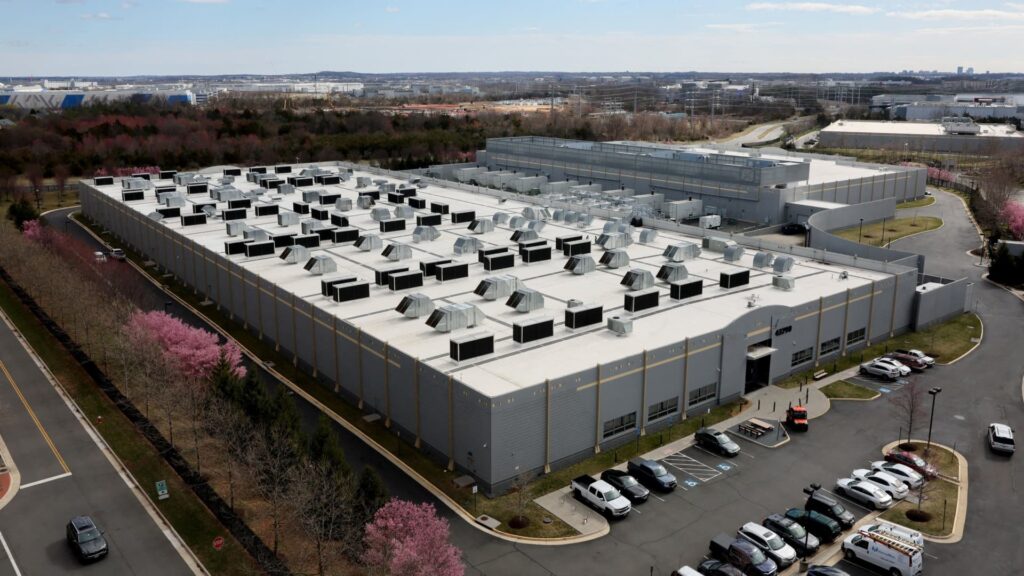The AI boom and Trump’s trade war are among macro trends leading demand for supply chain financing within the U.S. economy.
There has been a recent surge in interest for financing to support data center component suppliers, according to Wells Fargo data. “The need for computing power for data centers is tremendous,” said Jeremy Jansen, head of global originations at Wells Fargo Supply Chain Finance. “This goes beyond the bricks-and-mortar. The capex that goes into these facilities, and the power generation to make sure these facilities stay online 24/7, is in the billions of dollars,” he added.
Jansen said data center component suppliers are seeking more financing support so they have the components readily available when a data center client calls.
“A lot of the suppliers are companies with investment-grade rated, public debt, and cash flow facilities, but the need to carry this inventory certainly puts stress on working capital,” Jansen said.
Overall, supply chain finance activity is up about 10% in the most recent quarter compared to the prior-year period, according to Wells Fargo, with the auto parts sector driving the majority of the growth.
Auto part supply chain financing activity is up over 20% in the most recent 90-day period with complete data, according to Wells Fargo. “And the vast majority of that product is from domestic suppliers,” Jansen said.
Generally, companies are importing more products from the Asia Pacific region, and countries including South Korea, India, and Malaysia, with supply chain financing activity up about 25% versus the prior-year period, with the supply chain financing data through July accounting for orders placed in June.
“Tariffs are certainly driving the changes we are seeing in the data,” Jansen said. “China, on the other hand, is very flat. The last 90 days were very similar to last year, a gauge that import levels are very consistent year over year. It’s been business as usual for the past 90 days,” he added.
Supply chain financing from Canadian suppliers is down around 10%, and Mexican suppliers have been flat over the last 90 days.
In the retail sector, financing activity continues for the inventory in stores and warehouses across the United States and Canada.
“We specialize in asset-based lending, which includes inventory not only in retail stores and warehouses, but in transit on vessels,” said Adam Davis, managing director of Wells Fargo Retail Finance. “It’s very critical that we understand the cost of a company’s inventory, the selling price and markup because it flows into how the inventory is valued under our facilities,” he said.
When a retailer sells through its on-hand inventory brought in ahead of new tariffs, and more expensive inventory arrives, the companies will need to know if they should reprice items, then determine how and when to reprice — or if deciding not to reprice, how to manage with lower margins. Retail clients submit their inventory weekly, monthly, and quarterly, so Wells Fargo has visibility across timelines into inventory trends.
“So, in theory, inventory is more expensive, and we started to see several retailers adjusting prices in the spring as these products started to filter onto store shelves or new orders were placed at higher costs,” Davis said. “We’re actively watching how this will continue to unfold and if it will impact inventory levels going into the holidays as retailers balance sales with preservation of cash flow.”
“Timing is crucial for the holidays,” Davis said. “It’s balancing inventory levels, timing and incremental costs while predicting holiday sales in order to maximize sales and protect margins.”
Davis added retailers have been very methodical in their inventory management and are evaluating item-by-item to determine what to keep on shelves.
Amid the trade war, Davis said retail clients also continue to review their short-term and long-term strategies, weighing the pros and cons of moving manufacturing out of China.
“We have seen certain categories that are more expensive to make here in the U.S. compared to abroad, so a company would have to weigh incentives being offered in the U.S. versus where they are currently manufacturing when deciding which categories make sense financially to move to domestic suppliers,” he said.

